The restaurant industry is a tough one, with often razor-thin profit margins, labor shortages, and intense competition for consumer’s dollars. National chain restaurants, whether company owned or franchises, are not exempt from such issues. National chains operate restaurants in standalone locations, in shopping malls, large stores, in turnpike rest areas, food courts, at highway interchanges, and on urban streets.
Many national restaurant chains, once prominent parts of the American landscape, have vanished. In some cases, the distinctive buildings they once occupied live on, housing other businesses. Others have had their once busy sites razed, replaced with a representative of another chain, or some other example of commerce. Here are 10 once popular and profitable national chains which have disappeared, though fans of all can find they live on in memories documented in books, films, and websites.
10. Arthur Treacher’s Fish and Chips
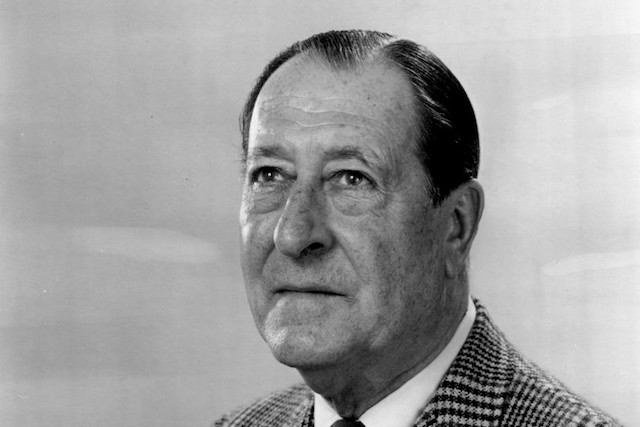
Arthur Treacher, a British actor who specialized in roles portraying a butler in films, was best known in the United States as Merv Griffin’s announcer and sidekick in the 1970s and early 1980s. He became a spokesman for the restaurant chain which bore his name, though he never confirmed whether he had a financial interest in the chain, which grew to over 800 stores by the late 1970s.
One of the first American chains to exploit the popular British fast food of fish and chips, the chain was founded in Columbus, Ohio, with Dave Thomas, later the founder of Wendy’s, among its principals. The chain peaked in both sales and number of locations in 1979, competing with Long John Silver’s, Captain D’s, and others for market share. Arthur Treacher’s association with the firm gave them an edge in advertising. In 1975 a company executive claimed the fried fish recipe was the actor’s personal creation.
During the 1970s the price of Icelandic cod soared, and Arthur Treacher’s replaced cod with pollock on their menus. The change reduced quality, led to lawsuits by franchisees, and sales dropped. After several changes in ownership, the brand faded from the fast food industry. As of 2021 only one Arthur Treacher’s restaurant remains, in Cuyahoga Falls, Ohio. Several Nathan’s Famous locations offer Arthur Treacher branded fish and chips on their menus, but the once popular chain is no more.
9. Howard Johnson’s
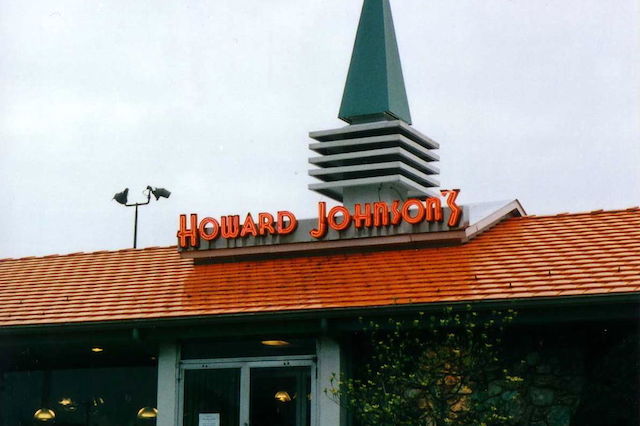
Howard Johnson’s began as a soda fountain in a corner drugstore in Quincy, Massachusetts, in 1925. By 1970 it was the largest restaurant chain in the United States. Easily recognizable from its orange roofs, cupolas, and its Simple Simon and the Pieman logo, it offered casual dining, including signature fried clam strips, and 28 flavors of ice cream. The restaurants frequently operated alongside hotels bearing the same name, though most restaurants were franchised separately by the mid 1960s.
In the 1940s and ensuing decades the company won the rights to operate restaurants located in turnpike rest areas in Connecticut, New Jersey, Pennsylvania, and Ohio, giving them competition free locations. In the late 1950s and early 1960s the company, which operated segregated restaurants in some American locations, became a target of civil rights activists. In 1962 it issued a directive to its franchisees opposing continued segregation, for which it drew praise.
Howard Johnson’s created a birthday club for children, in which children received a birthday card they could redeem for a free meal, including cake and, of course, ice cream. In the late 20th century, changes in American dining, particularly when traveling, began to weaken the casual family dining model upon which the chain had been built. By the beginning of the 21st century the chain, which had peaked with over 1,000 restaurants, was down to just a handful of stores. In 2016 the last true Howard Johnson’s restaurant, located in Bangor, Maine, closed, and though Howard Johnson’s hotels still exist, the once popular restaurant chain is defunct.
8. Sambo’s
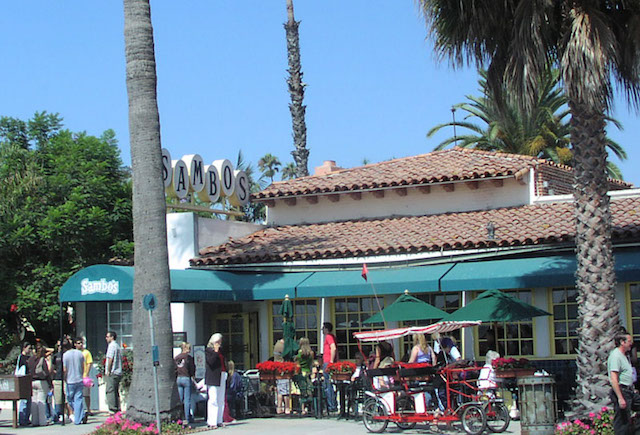
Sam Battistone Jr and his business partner, Newell Bohnett, used a portmanteau of their nicknames, Sam and Bo, when they christened their new restaurant Sambo’s in 1957. At the time a children’s book, The Story of Little Black Sambo, was popular, and the partners capitalized on its imagery when promoting their menu and in the décor of their restaurants. In the 1960s the growing chain created a club for children called Sambo’s Tiger Tamers, capitalizing on the tigers in the story which chased each other around a tree before melting into clarified butter.
The chain, which focused on family in-house dining and an emphasis on breakfast foods, grew strongly throughout the 1960s and 70s, reaching a peak of 1,117 outlets by 1979. But internal pressures over its compensation system for managers and external pressures regarding the racist imagery in its stores and name put the company under increasing negative scrutiny. Some communities refused to grant licenses to the company over its name, leading it to rebrand a few stores as Jolly Tiger restaurants. In 1979 the company reversed its position, renamed the Jolly Tiger locations as Sambo’s, or closed them altogether.
Sambo’s locations were subjected to protests, boycotts, and other actions within some communities. In 1981 the combination of declining sales and internal financial pressures led the chain into bankruptcy. Further attempts at changing the names of some locations did not alleviate the financial pressures and in the early 1980s all Sambo’s Restaurants but one – the original – were gone. In 2020 it finally yielded to local pressure and changed its name to “Chad’s.”
7. Toddle House
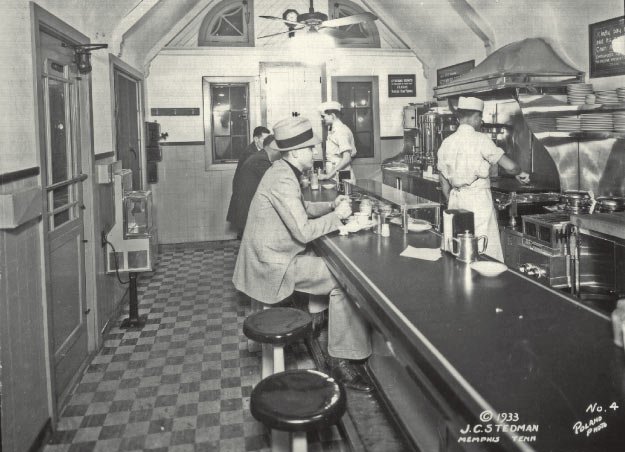
Beginning in the 1920s, a chain of breakfast oriented small restaurants spread across the South and Midwest. The chain featured look-alike small buildings which appeared to be built of white painted brick (most weren’t), with steep blue roofs. Seating was at a counter, with 10 stools. Customers paid for their meals by depositing their check and the corresponding amount of cash in a glass receptacle near the door. A sign read “No Tipping Allowed.” All of the restaurants were open 24/7.
By the 1950s the National Toddle House System claimed over 200 stores, in more than 90 cities and towns in the United States. In 1955 Joe Rogers Sr, an executive with Toddle House, partnered with Tom Forkner to form Waffle House, though he retained his position with his employer. That situation remained until 1960 when Rogers, after being denied the opportunity to buy into Toddle House, left and took over operations for Waffle House, then just three locations.
In the segregated South, Toddle House operated separate restaurants of similar design it called Harlem House. In 1962 Toddle House vanished, replaced by another chain, Dobbs Houses. A second Toddle House chain began in 1981 in Florida, and reached a peak of about 40 locations before it too failed during difficult financial conditions in the late 1980s.
6. Lum’s
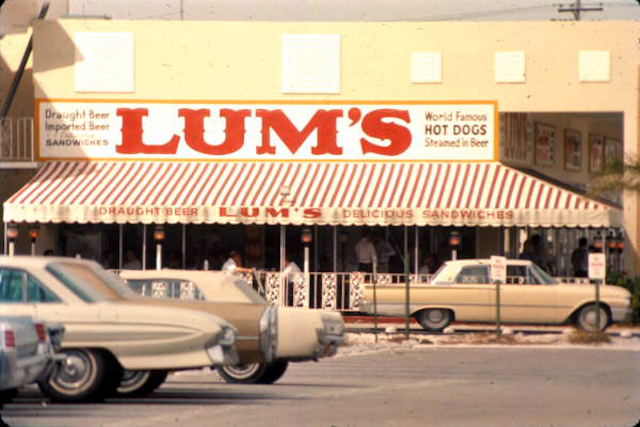
In the mid-1950s, Florida’s Perlman brothers opened a restaurant in Miami Beach which proudly featured on its menu hot dogs steamed in beer. They called their restaurant Lum’s and it was an immediate success. By the early 1970s, the featured hot dog was 35 cents, though a customer could request sherry-flavored sauerkraut on top for another nickel. By then Lum’s was listed on the New York Stock Exchange.
In 1969 the Perlman’s purchased Caesar’s Palace in Las Vegas, and sold the Lum’s chain to Kentucky Fried Chicken, then run by John Y. Brown, a later governor of Kentucky. From its peak of 450 stores in the early 1970s, Lum’s declined under Brown’s control, while Kentucky Fried Chicken grew steadily, including internationally. In the early 1970s Lum’s featured an extensive list of imported beers, rare at American restaurants, especially casual dining restaurants, at the time.
The imported beer was a result of the chain being taken over by a Swiss chain named Wienerwald. The decline continued and by 1978 few Lum’s restaurants remained open for business. In 1982 Lum’s entered bankruptcy, and the few remaining stores closed, except for one in Bellevue, Nebraska. That location operated under the Lum’s name, still featuring hot dogs steamed in beer, until it succumbed in 2017.
5. Red Barn
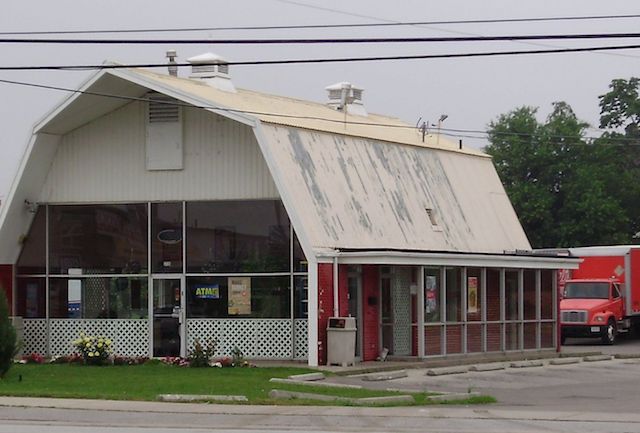
With the advent of the Interstate Highway System in the late 1950s and early 1960s the fast food industry entered a boom. New chains emerged with astonishing regularity. Among them, in the American Midwest, was Red Barn, the first of which opened in Springfield, Ohio, in 1961. Red Barns operated out of a patented barn shaped building with a glass front, with no interior seating, though outside tables were usually available.
They advertised to children using animated characters called Hamburger Hungry, Chicken Hungry, and Fish Hungry. Later stores offered limited interior seating and it was among the first fast food chains to offer a salad bar. Red Barn expanded rapidly, reaching a peak of over 400 stores, with locations in the United States, Canada, and even Australia. Eventually the successful franchise was owned by City Investing, which purchased the chain to acquire the property on which the restaurants sat. They had no interest in expanding the chain further, and instead began to liquidate it.
Company owned locations were immediately closed, and when franchise agreements expired they were not renewed. Gradually the chain shrank as franchisees closed their doors one by one. By the early 1980s the chain was gone, though many of the buildings operated other businesses for many years. Though a group of franchisees attempted to keep Red Barn’s concept alive with restaurants named The Farm, that concept failed to gain much traction and by 2015 only one remained, in Racine, Wisconsin. As of 2022 it too, has closed.
4. White Tower Hamburgers
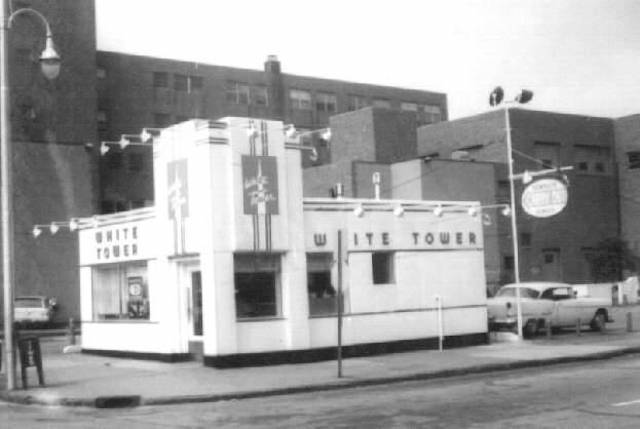
White Castle began operations in 1921. Over the next few years the Saxe brothers, Tom and John, visited several White Castles as that chain expanded, observing their operations, the neighborhoods in which they were built, and the success of different menu offerings. In 1926 they opened the first White Tower Hamburgers restaurant in Milwaukee, Wisconsin. The building was all white, selected because of the color’s association with cleanliness and hygiene. To reinforce the image they dressed their waitresses in white nurses uniforms, and called them “Towerettes.”
White Tower Hamburgers concentrated their expansion in large urban areas, placing their restaurants as much as possible near commuter choke points such as bus depots, train stations, and subway. Often they were near the earlier White Castle, and both offered 5 cent hamburgers. Lawsuits between the two companies began in 1928. Eventually, a United States Court of Appeals found White Tower had deliberately copied White Castle, but the chain remained in operation and continued to expand. That 1934 court decision forced the two competing chains to avoid territories occupied by the other.
In the 1950s the chain began to decline, in part because the automobile replaced trains and buses as a means of commuting, leaving many of its restaurants in declining urban areas. From its peak of about 230 locations, the chain entered a slow but steady decline, and by the mid-1980s only a handful remained. Though some buildings remain, housing other businesses in a few cities, the White Tower Hamburgers chain is now completely gone. White Castle continues to thrive.
3. Bresler’s 33 Flavors
Bresler’s 33 Flavors began as a single ice cream parlor in 1927. Founded by a Polish immigrant named William Bresler, it expanded throughout the ensuing six decades, reaching a peak of 300 stores, 297 of them owned by franchisees, at the time of Bresler’s death in 1985. A companion fast food chain, Henry’s Hamburgers, began operations in 1954. Henry’s expanded to over 200 stores before entering a period of decline in the late 1970s, in part because of the failure to adapt its menu to changes in the industry initiated by national chains such as McDonalds and Burger King. Today only one restaurant remains.
Bresler’s continued to expand however. Following the death of William Bresler in 1985 the company was acquired by Oberweis Dairy. Oberweis modernized the products somewhat to compete with emerging trends, including adding frozen yogurt to the list of items it offered. The changes required the name to be changed to Bresler’s Ice Cream.
Eventually Bresler’s Ice Cream was acquired by Coolbrands, a conglomerate which acquired numerous entities in the ice cream and frozen dessert market, including ICBIY (I Can’t Believe It’s Yogurt), Yogen Fruz, and numerous other brands. Bresler’s Ice Cream shops were rebranded beginning in the early 2000s, and the chain known as Bresler’s Ice Cream was gone by 2007.
2. Kenny Rogers Roasters
Kenny Rogers Roasters still exists, but one cannot be found in the United States. Despite being featured in a memorable episode of Seinfeld, the chain failed to remain competitive in America, where it was founded in 1991. Singer Kenny Rogers partnered with John Y. Brown to launch the chain, but by 1998 the company’s financial situation was precarious, and it entered bankruptcy. By then it had 90 franchises, 40 of which were in the United States.
Nathan’s Famous purchased the chain out of bankruptcy in 1998, and as part of the purchase agreement received the rights to sell Kenny Rogers Roasters branded products in its stores. In 2008 Nathan’s sold the chain to its Asian franchisee in Malaysia. They retained the rights to sell Kenny Rogers Roasters products in select North American locations, including their flagship store at Coney Island, New York.
In 2011, the last North American Kenny Rogers Roasters closed its doors. The chain continued to operate in Asia, Malaysia, and the Philippines. It also operates a location in Dubai, which opened in 2015. But despite the free publicity afforded it by its Seinfeld appearance, the chain never really caught on in the United States.
1. Burger Chef
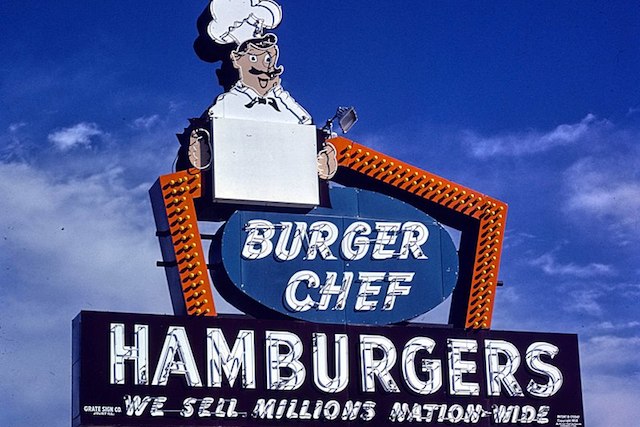
Before McDonald’s offered the Big Mac, Burger Chef had a double decker hamburger called the Big Shef. They beat McDonald’s to the quarter pounder too, offering the Super Shef hamburger of that weight. Before Burger King promised a customer could have it your way, Burger Chef offered a toppings bar, called the Works Bar, allowing purchasers to customize their sandwiches as they saw fit. They also introduced a child’s meal, called the Fun Meal, which came in a cardboard box and offered a small toy along with their food.
Before Ronald McDonald appeared, Burger Chef had animated characters named Burger Chef and Jeff, with a supporting cast which included a magician named Burgerini, a vampire named Count Fangburger, and a witch named Cackleburger. Burger Chef sued McDonald’s when the latter introduced its Happy Meal in 1979 and adopted corresponding characters, but ultimately lost. Burger Chef offered flame-broiled hamburgers in its restaurants, introduced a salad bar in 1973, and in 1978 offered nine different Star Wars themed Fun Meals for kids.
Founded in 1954, Burger Chef reached its peak in 1973, with well over 1,000 stores in the United States and Canada. In 1968 it was acquired by General Foods. Fourteen years later General Foods sold the chain to a Canadian company, Imasco, which owned a competing chain, Hardee’s. Imasco rebranded most Burger Chef locations as Hardee’s, and gradually closed the rest. Three times in the 21st century Hardee’s has briefly offered the Super Shef or Big Shef at select locations, primarily in the Midwest, and referenced Burger Chef in supporting advertisements. The last Burger Chef restaurant closed its doors in 1996.